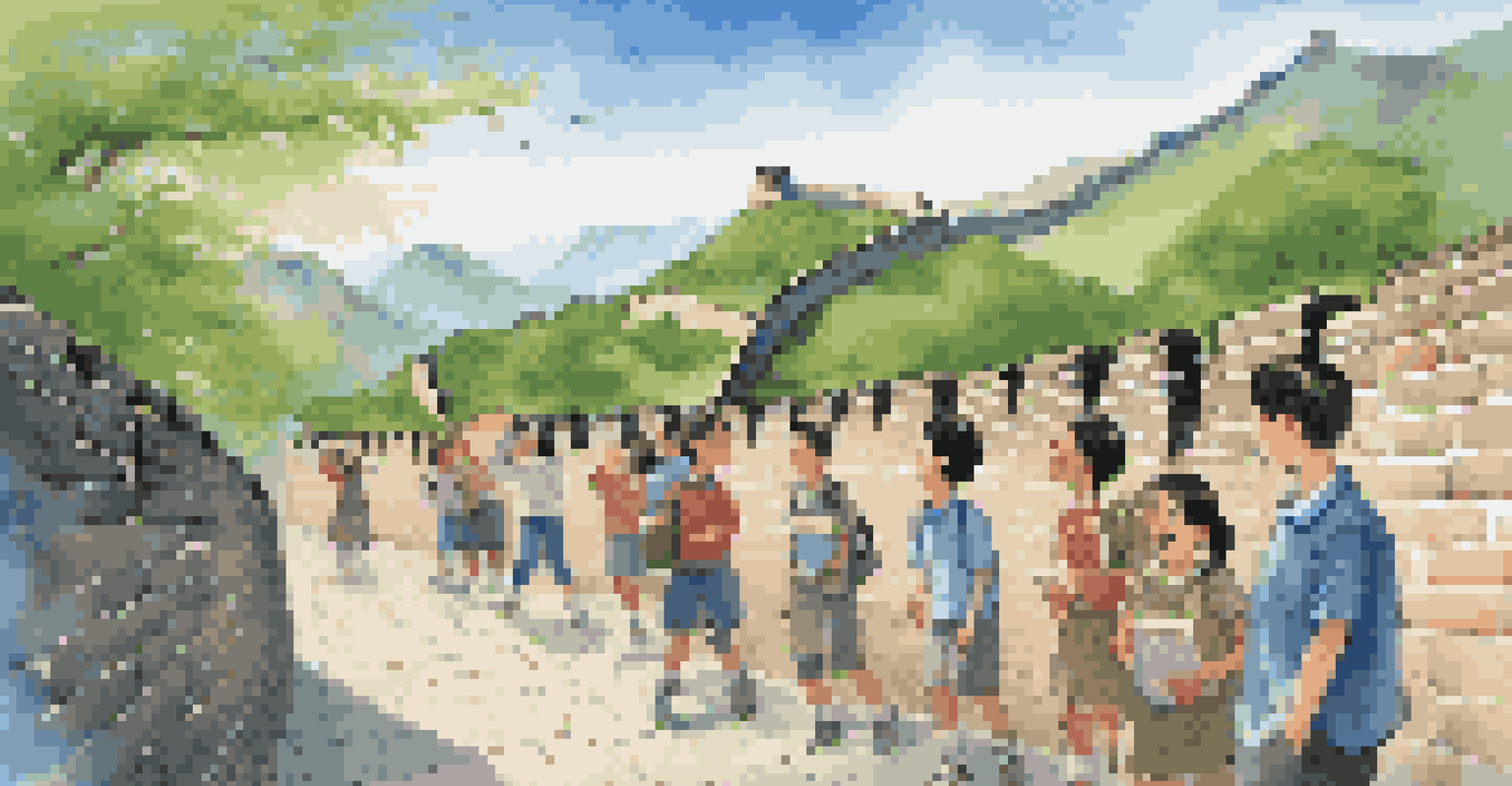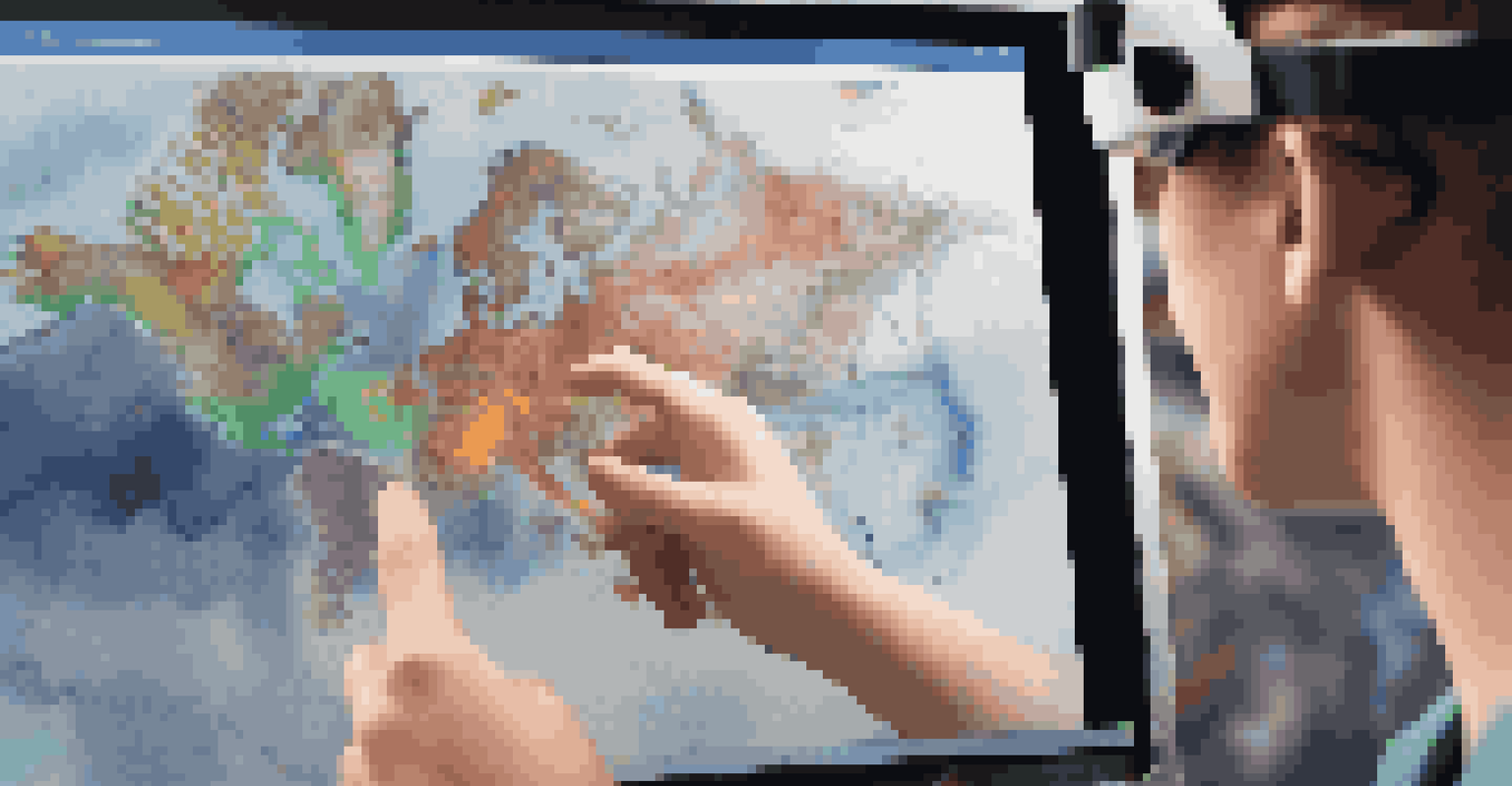The Benefits of Using VR for Teaching Geography Concepts

Engaging Students with Immersive Learning Experiences
Virtual Reality (VR) captivates students by placing them in immersive environments. Rather than passively reading about continents and climates, learners can explore these concepts firsthand. Imagine standing on the Great Wall of China or wandering through the Amazon Rainforest—all from the classroom. This engagement enhances retention and makes learning geography an adventure.
The greatest gift of education is the ability to think critically and solve problems in real-time.
The interactive nature of VR fosters curiosity and encourages students to ask questions. Instead of merely memorizing facts, they get to experience the ‘why’ and ‘how’ behind geographical features. For instance, observing how rivers shape landscapes in real-time offers insights that textbooks alone cannot provide. Such experiences can ignite a passion for geography that lasts a lifetime.
Moreover, VR supports various learning styles, accommodating visual, auditory, and kinesthetic learners. This inclusivity ensures that every student has the opportunity to thrive in their geography studies. When learners can visualize concepts, they are more likely to understand and apply them, making geography not just a subject, but a fascinating exploration of our world.
Bridging Gaps in Understanding Complex Concepts
Some geographical concepts can be quite abstract, such as tectonic plate movements or climate change. VR allows students to visualize these processes in a way that is both engaging and comprehensible. For example, a VR simulation can show how earthquakes occur, helping students grasp the mechanics behind seismic activity. This hands-on approach demystifies complex topics and enhances understanding.

In addition, VR can illustrate the impact of human activity on the environment, such as deforestation or urbanization. Witnessing these changes in a virtual setting empowers students to see the consequences of their actions. This not only builds awareness but also encourages responsible citizenship and environmental stewardship.
VR Enhances Geography Learning
Virtual Reality immerses students in engaging environments, making geography concepts tangible and exciting.
Ultimately, VR acts as a bridge between theoretical knowledge and real-world applications. When students can see the direct effects of geographical phenomena, they are better equipped to engage in discussions about sustainability and conservation. This deeper understanding is crucial for fostering informed future leaders.
Enhancing Collaboration and Social Learning
VR can transform the geography classroom into a collaborative space where students work together on projects and simulations. Imagine a virtual expedition where learners must navigate through different terrains, making decisions as a team. This not only enhances their understanding of geography but also builds teamwork skills that are essential in today’s interconnected world.
Technology is best when it brings people together.
Through shared VR experiences, students can discuss their observations and findings in real-time. This peer-to-peer learning fosters a sense of community and encourages diverse perspectives. For instance, students from different backgrounds can share insights on how geography shapes their cultures and lives, enriching everyone's learning experience.
Moreover, collaborative VR projects can extend beyond the classroom, connecting students with peers across the globe. This global interaction allows them to explore geography from a variety of cultural viewpoints, making the subject even more relevant and exciting. The potential for collaboration through VR is vast, opening doors to new friendships and shared knowledge.
Facilitating Field Trips and Global Exploration
One of the most significant advantages of VR is its ability to bring the world into the classroom. With VR, students can embark on virtual field trips to iconic locations without ever leaving their seats. From the pyramids of Egypt to the beaches of Australia, students can explore diverse ecosystems and cultures in one lesson. This accessibility makes geography more tangible and relatable.
These virtual excursions can also cater to students who may not have the means to travel. For those with physical limitations or financial constraints, VR provides an opportunity to experience the world in a way that might otherwise be impossible. This democratization of experience ensures that all students can engage with geography, regardless of their circumstances.
Fosters Collaboration and Inclusivity
By facilitating teamwork and accommodating diverse learning needs, VR creates an inclusive and collaborative classroom experience.
Additionally, virtual field trips can be tailored to specific curriculum needs, allowing teachers to create focused learning experiences. For example, a trip to the Arctic can be designed to study climate change, while a visit to a bustling city can explore urban geography. This flexibility ensures that students are not just observers but active participants in their geographical education.
Developing Critical Thinking and Problem-Solving Skills
VR encourages students to think critically and solve problems in real-time. Through interactive scenarios, learners must analyze information, make decisions, and reflect on the consequences of their actions. For example, navigating through a natural disaster simulation requires students to apply their geographical knowledge practically, honing their analytical skills.
These immersive experiences can help students develop a growth mindset, as they learn to approach challenges with resilience. They understand that mistakes are part of the learning process, which is crucial for their overall development. This environment fosters a sense of exploration and experimentation, where students feel empowered to take risks.
Furthermore, by presenting real-world challenges, VR prepares students for future careers in fields related to geography, such as environmental science, urban planning, or international relations. The skills they cultivate in VR settings are transferable to various professional contexts, making them more competitive in the job market.
Promoting Inclusivity and Accessibility in Education
VR can play a vital role in promoting inclusivity in geography education. It offers a unique opportunity to cater to students with different learning needs and preferences. For instance, students with disabilities can benefit from tailored VR experiences that address their specific challenges, ensuring they have equal opportunities to learn.
Additionally, VR can provide language support through visual aids and immersive environments. Students who are English Language Learners (ELL) can visualize geographical concepts and associate them with their native languages, making learning more accessible. This approach can significantly reduce language barriers and enhance comprehension.
Develops Critical Thinking Skills
VR encourages students to solve real-world problems, honing their analytical skills and preparing them for future careers.
By creating a more inclusive learning environment, VR fosters a sense of belonging among all students. When every student feels valued and understood, they are more likely to engage actively in their education. This inclusivity not only enriches the learning experience but also cultivates a more empathetic and understanding classroom culture.
Inspiring Future Generations through Innovative Technology
As technology continues to evolve, so does the potential for innovative teaching methods like VR. By integrating VR into geography lessons, educators inspire students to embrace technology as a tool for exploration and learning. This enthusiasm for new technology can spark interest in STEM fields and encourage students to pursue careers in technology and geography.
Moreover, exposure to VR in the classroom can help students develop digital literacy skills essential for the 21st century. Understanding how to navigate and utilize technology effectively is crucial in today's digital world. With VR, students learn to adapt to new tools, preparing them for future academic and professional endeavors.

Ultimately, using VR in geography education not only enhances learning but also prepares students for a rapidly changing world. By inspiring curiosity and innovation, educators can equip future generations with the skills and knowledge they need to thrive in an interconnected and technologically advanced society.